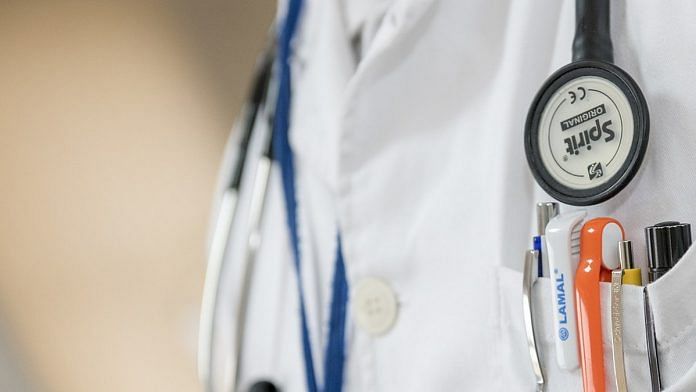
New Delhi: Rural India is struggling to cope with a severe shortage of specialist doctors, despite many discussions in successive governments to improve the situation, according to the Rural Health Statistics (RHS) 2019-20 released Wednesday.
Fifteen years since the launch of the National Rural Health Mission (NRHM), the number of specialists in villages across India misses the target requirement by over 6,000, states the RHS, an annual exercise that seeks to take stock of the rural health infrastructure and manpower in the country.
“Moreover, as compared to requirement for existing infrastructure, there is a shortfall of 78.9 per cent of surgeons, 69.7 per cent of obstetricians & gynaecologists, 78.2 per cent of physicians and 78.2 per cent of paediatricians,” says the RHS.
“Overall, there is a shortfall of 76.1 per cent of specialists at the CHCs (community health centres) as compared to the requirement for existing CHCs.”
In some states, the data show, the situation is truly dire.
Gujarat, for example, is short of 996 specialists against a total requirement of 1,088. Madhya Pradesh, with a total requirement of 916, is short of 867. West Bengal has a requirement of 380 specialists but has 247 fewer. Nationally, the total requirement of specialists is 13,384, with an overall shortfall of 6,110.
The position of Ayush specialists, meanwhile, is much better — a shortfall of 701 against a total requirement of 5,183. This is perhaps why, as the health infrastructure across the country gets overwhelmed by the Covid-19 pandemic, government think tank Niti Aayog has advised people with mild disease to go to Ayush practitioners.
Health and wellness centres
Until 31 March 2020, there were 38,595 functional health and wellness centres in rural India.
The target under Ayushman Bharat — the Modi government’s flagship health programme — is to set up 1,53,000 health and wellness centres by 2022.
There are a total of 1,43,538 and 2,87,025 beds available at the level of sub-divisional hospitals and district hospitals, respectively, the data state.
One sub-centre in India currently caters to an average population of 57,291, a primary health centre to an average population of 30,35,730, and community health centre to an average of 1,71,779 people, the RHS adds.
According to norms, a sub-centre can cater to a maximum of 5,000 people, a primary health centre to a maximum of 30,000, and a community health centre to a maximum of 1,20,000 people. This shows that rural India remains critically short of tertiary care infrastructure 15 years after the launch of NRHM.
(Edited by Sunanda Ranjan)
Subscribe to our channels on YouTube & Telegram
Why news media is in crisis & How you can fix it
India needs free, fair, non-hyphenated and questioning journalism even more as it faces multiple crises.
But the news media is in a crisis of its own. There have been brutal layoffs and pay-cuts. The best of journalism is shrinking, yielding to crude prime-time spectacle.
ThePrint has the finest young reporters, columnists and editors working for it. Sustaining journalism of this quality needs smart and thinking people like you to pay for it. Whether you live in India or overseas, you can do it here.